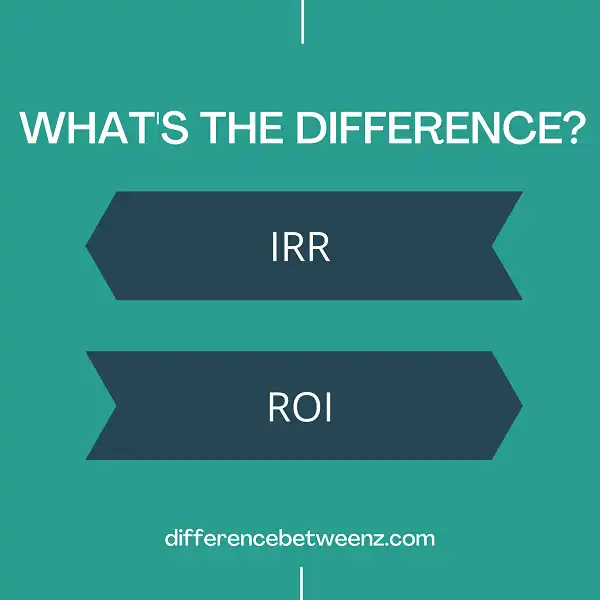Two of the most commonly used financial metrics in business are IRR and ROI. While they have similar sounding names, these two metrics are actually quite different from each other. In this blog post we will breakdown the difference between IRR and ROI, and discuss when each metric is most appropriate to use.
What is IRR?
IRR, or Internal Rate of Return, is a financial measure used to asses the profitability of an investment. IRR is defined as the rate at which the present value of cash flows from an investment equals the initial investment amount. In other words, it’s the point at which your investment will have paid for itself. IRR is used by individuals and businesses alike to compare different investments and choose the most profitable one. While IRR can be a useful metric, it’s important to remember that it only measures profitability in terms of cash flow. As such, it doesn’t take into account other factors that may also be important, such as risk or potential return. As a result, IRR should be just one part of your overall investment decision-making process.
What is ROI?
ROI is a business and investing term that measures the relationship between the amount of money invested in a project and the amount of return generated by that investment. ROI is typically expressed as a percentage or a ratio, and it is often used to compare different investments. For example, if an investor throws $1,000 into a stock that subsequently goes up in value by $100, the ROI would be 10%. ROI can also be negative, meaning that the investment has lost money. ROI is just one factor that investors consider when making decisions, but it can be a helpful metric for determining whether an investment is likely to be profitable.
Difference between IRR and ROI
IRR and ROI are two important measures when considering an investment. ROI, or return on investment, is a measure of how much money an investment will generate over a certain period of time. IRR, or internal rate of return, is a measure of how quickly an investment will generate a return. Both IRR and ROI are important when considering an investment, but they differ in how they are calculated and what they represent. IRR is generally a more accurate measure of an investment’s true return, but ROI is simpler to calculate and is often used as a preliminary screening tool. When considering an investment, it is important to consider both IRR and ROI in order to make the best decision.
Conclusion
IRR and ROI are two different measures of how successful a particular investment is. IRR looks at the profitability of an investment over time, while ROI takes into account not only the profits generated by an investment, but also the initial investment itself. It can be helpful to understand the difference between these two metrics when making decisions about where to invest your money.


